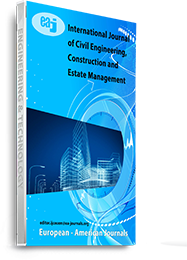Soft soils are expansive soils, also referred to as tropical clay. Soft soil may cause instability to foundations thereby reducing their service life, this necessitates the adoption of a suitable soil stabilization method in order to improve the engineering properties of soft soils. This research work aims at comparing the strength properties of soft soil stabilized using two different agricultural wastes- Bagasse Ash (BA) and Rice Husk Ash (RHA). The studies were conducted to determine the properties of the natural and treated soft soils, the oxide composition of BA and RHA and the evaluation of the effect of BA and RHA (0, 2, 4, 6, 8, 10 and 12 % by dry weight of the soil) on the index and strength properties of soft soil, the determination of strength characteristics (proctor compaction , unconfined compressive strength (UCS), and California bearing ratio, (CBR) under soaked and unsoaked conditions) of soft soil with BA and RHA mixtures, the optimum blend of both BA and RHA needed for the stabilization of clay soil, the comparison of BA and RHA as stabilizing agents on the performance of clay soil. From the test results, it was observed of the natural moisture content of the clay soil was to be 18.02%, indicating that the soil material is a relatively high water holding material with very low porosity and specific gravities of 2.66. The maximum dry density (MDD) of BA treated soil increased with higher BA content to an optimum BA content lying between 8-10% of dry clay soil and MDD of RHA treated soil continuously decreased with addition of RHA to the clay soil. OMC of BA and RHA treated soils continuously increase, the BA treated clay soil increase with increase in BA content with a possible percentage increment of 11.20% and RHA treated clay soil increases continuously with addition of RHA to a percentage increment of 16.2%. BA content leads to a consequent increase in CBR to an optimum value of 9%. The optimum value of RHA content was obtained as 10% with a maximum CBR value of 28.72%. BA treated clay soil increase both CBR and UCS to percentage increment change of 630% and 91.41% respectively while percentage increments of 619.8% and 85.23% were recorded for RHA treated clay soil. BA thus improved the strength properties better in comparison to RHA although in smaller optimum percentage addition.
Keywords: Soft Soil; BA; RHA; Stabilisation; OMC; MDD; UCS; CBR; optimum blend

